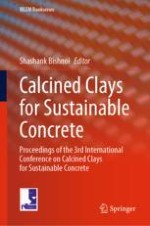2020 | OriginalPaper | Chapter
Influence of Calcined Clay-Limestone Ratio on Properties of Concrete with Limestone Calcined Clay Cement (LC3)
Authors : Yuvaraj Dhandapani, Manu Santhanam
Published in: Calcined Clays for Sustainable Concrete
Publisher: Springer Singapore
Activate our intelligent search to find suitable subject content or patents.
Select sections of text to find matching patents with Artificial Intelligence. powered by
Select sections of text to find additional relevant content using AI-assisted search. powered by
